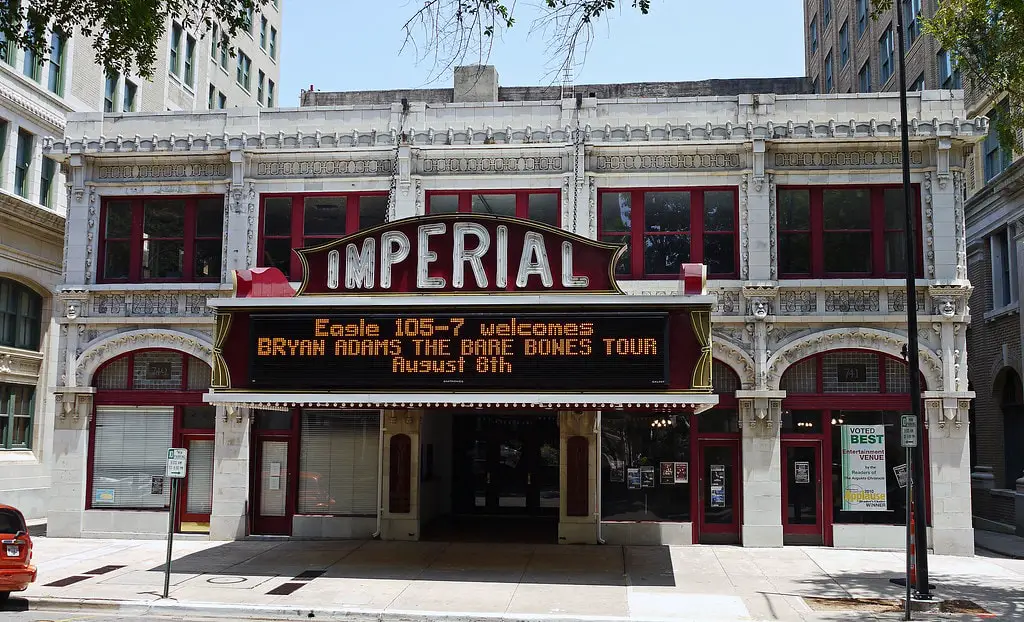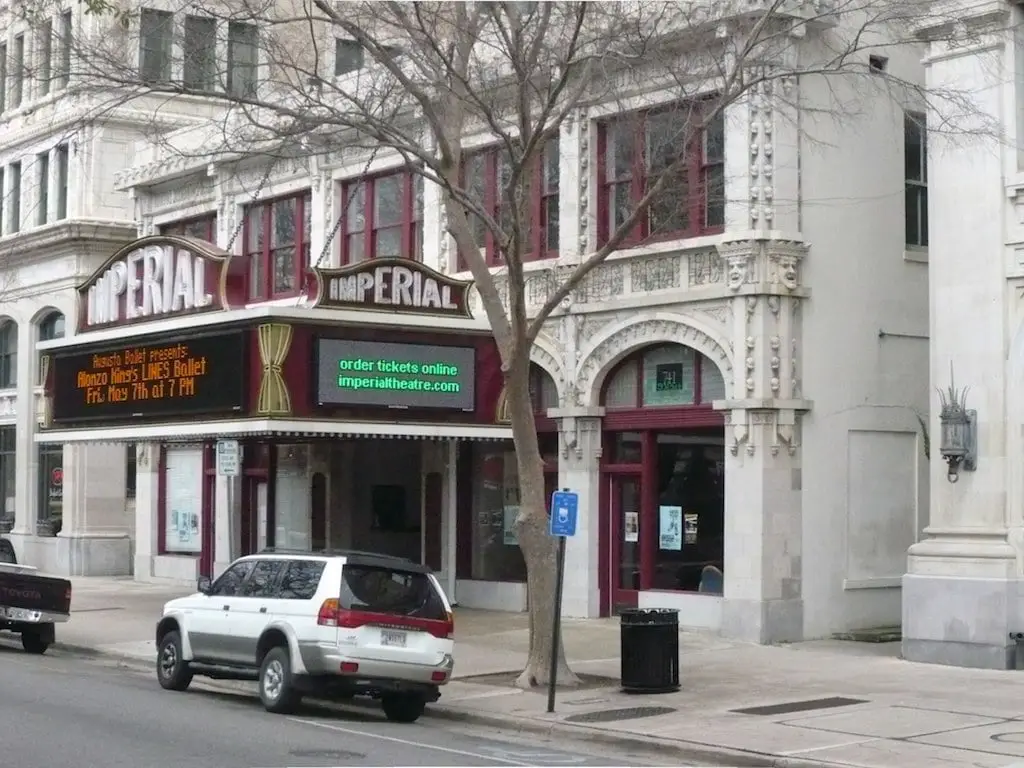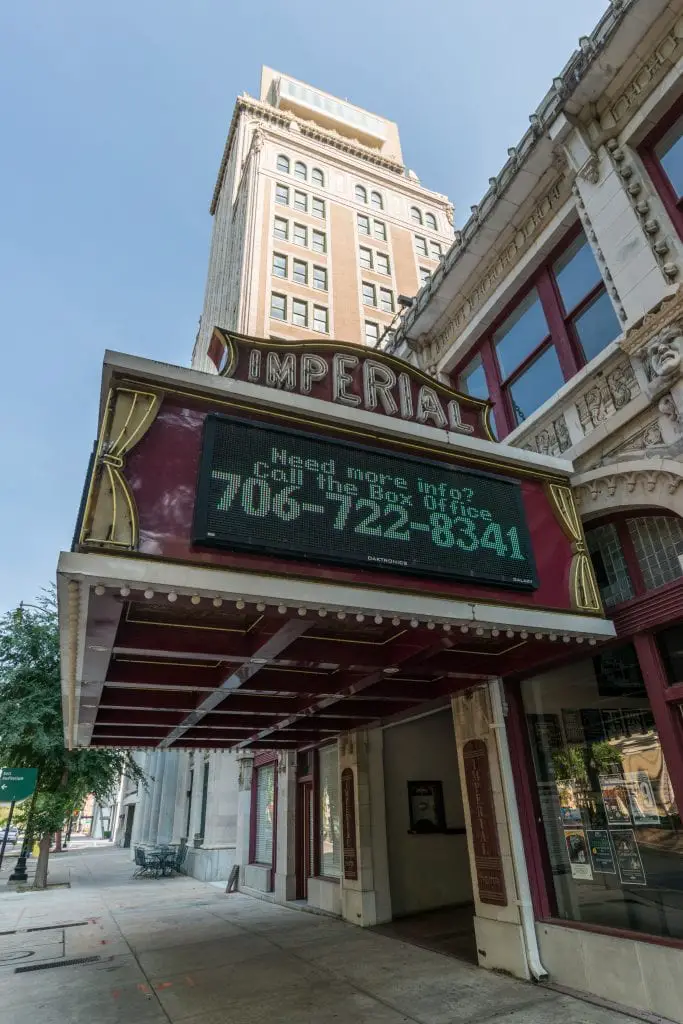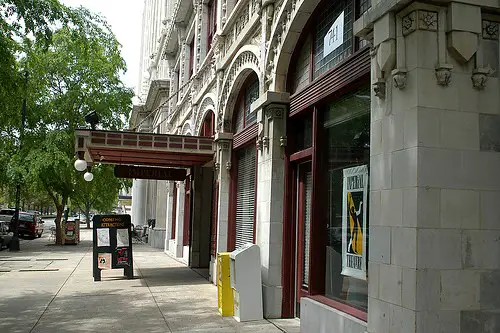The Birth of a Theatre
In the heart of downtown Augusta, Georgia, stands a monument to the city’s rich cultural heritage: the Imperial Theatre. Opening its doors on February 18, 1918, this 853-seat theater was initially known as The Wells Theatre.
Initiated by the impresario Jake Wells, the distinguished architect G. Lloyd Preacher crafted the theatre’s design, reflecting the elegance of the Victorian Renaissance style. The construction cost was a substantial $47,792.00 at the time.
The opening night was grand, with ticket prices ranging from $0.10 for a matinee to $0.35 for orchestra seats. The excitement in the air was palpable, and the city’s residents flocked to witness the vaudeville showcase that marked the beginning of a new era in entertainment.
But the Wells Theatre was more than just a place for amusement; it symbolized Augusta’s cultural aspirations. Named after the Imperial Theatre in New York City, it sought to bring a touch of the big city’s glamour to the local stage.
The architecture, the performances, and even the name were carefully chosen to reflect a sense of sophistication and elegance.
The Wells Becomes The Imperial Theatre
The early days of the theatre were not without challenges. In October 1918, over 3,000 cases of Spanish Flu were reported in the area, leading to the death of 52 service members from a local military camp.
In this closure, the local authorities declared a shutdown of all communal spaces, including the theatre. Jake Wells faced financial difficulties during this quarantine and sold The Wells to Lynch Enterprises.

On November 27, 1918, the quarantine was lifted, and two weeks later, the theatre reopened under the name of Jake Wells with The B. F. Keith Supreme Vaudeville Co. The Wells Theatre’s name was soon changed to The Imperial Theatre, marking a new chapter in its history.
During the initial decades of the 20th century, the theatre consistently offered the residents of Augusta engaging entertainment, evolving to meet its audience’s shifting preferences and expectations.
Transition to Motion Pictures
As vaudevillian acts decreased in popularity, motion pictures began taking center stage. 1929 the Imperial Theatre was renovated into a full-time movie house in the famous art deco style. The first color film, “The Trail of the Lonesome Pine,” starring Henry Fonda and Fred MacMurray, was shown in March 1936.
The transition to a movie house was more than just a change in programming; it reflected the cultural shifts across the country. The Imperial Theatre was not just keeping up with the times; it was leading the way, setting trends, and defining what entertainment meant for the people of Augusta.

The theatre’s location in the Broad Street Historic District added to its charm and was listed on the National Register as necessary to the character of the entire district. It was not just a place to watch films but a place where history was made and preserved.
Decline and Rebirth
Despite its success, the Imperial Theatre faced challenges. The decline of the downtown area led to its closure as a film theatre in 1981. The once-bustling venue fell silent, a poignant reminder of a bygone era.
But the Imperial’s story was far from over. It reopened in 1985 as a performing arts venue recognized for its architectural significance. Cultural organizations such as the Augusta Ballet and the Augusta Players infused the venue with renewed energy, turning what was once a forgotten artifact into a lively center for artistic expression.
The rebirth of the Imperial Theatre was not just a triumph for the arts community but a victory for the city itself. It proved that even the most forgotten places could be brought back to life with vision, determination, and collaboration.

The Imperial Theatre Today
Today, the Imperial Theatre is a testament to Augusta’s resilience and cultural vitality. It is the only operating historic theatre in the city, connecting artists and patrons through diverse entertainment. From musicals and dance to concerts and comedy, the Imperial offers something for everyone.
The latest event, scheduled for September 22, 2023, features The Mad Hatters, a premier Tom Petty and The Heartbreakers tribute act. Formed in late 2020 in Atlanta, GA, they have quickly gained recognition for their pulse-pounding sound.
But the Imperial Theatre is more than just a venue for performances; it’s a gathering place for the community. It’s where memories are made, laughter and tears are shared, and where the spirit of Augusta comes alive.

Celebrity Appearances
Many celebrities have graced the Imperial’s stage over the years. One of the first documented visits to the theatre was by Charlie Chaplin on April 18, 1918, as part of his efforts to promote Liberty war bonds. Other distinguished visitors were Leo Carrillo, who eventually played the role of Pancho alongside the Cisco Kid and the renowned ballet artist Anna Pavlova.
These visits were not just fleeting moments; they were part of the fabric of the theatre’s history. They added to its mystique, allure, and reputation as a place where stars shone brightly.
The Imperial’s archives may only document a few of these visits, but the memories they created live on in the hearts and minds of those there. They are part of the collective memory of a city that values its cultural heritage and celebrates its artistic achievements.

Architectural Significance
The Imperial Theatre’s architectural significance cannot be overstated. The building is a work of art from its original Victorian Renaissance design to its transformation into an art deco movie house.
Its listing on the National Register highlights its importance to the Broad Street Historic District. But more than that, it underscores its role as a keeper of Augusta’s architectural legacy.
The Imperial is not just a place to enjoy performances but to appreciate beauty, craftsmanship, and the timeless appeal of great design. It’s a place that inspires, delights and reminds us of the power of creativity.
Conclusion
The Imperial Theatre’s story is a rich tapestry woven from history, culture, and community threads. From its humble beginnings as a vaudeville showcase to its current status as a vibrant arena for entertainment, it has been a constant presence in Augusta’s cultural landscape.
Its resilience in the face of challenges, ability to adapt and evolve, and commitment to excellence make it a true jewel in Augusta’s crown. It’s not just a theatre; it’s a living, breathing part of the city’s soul.
